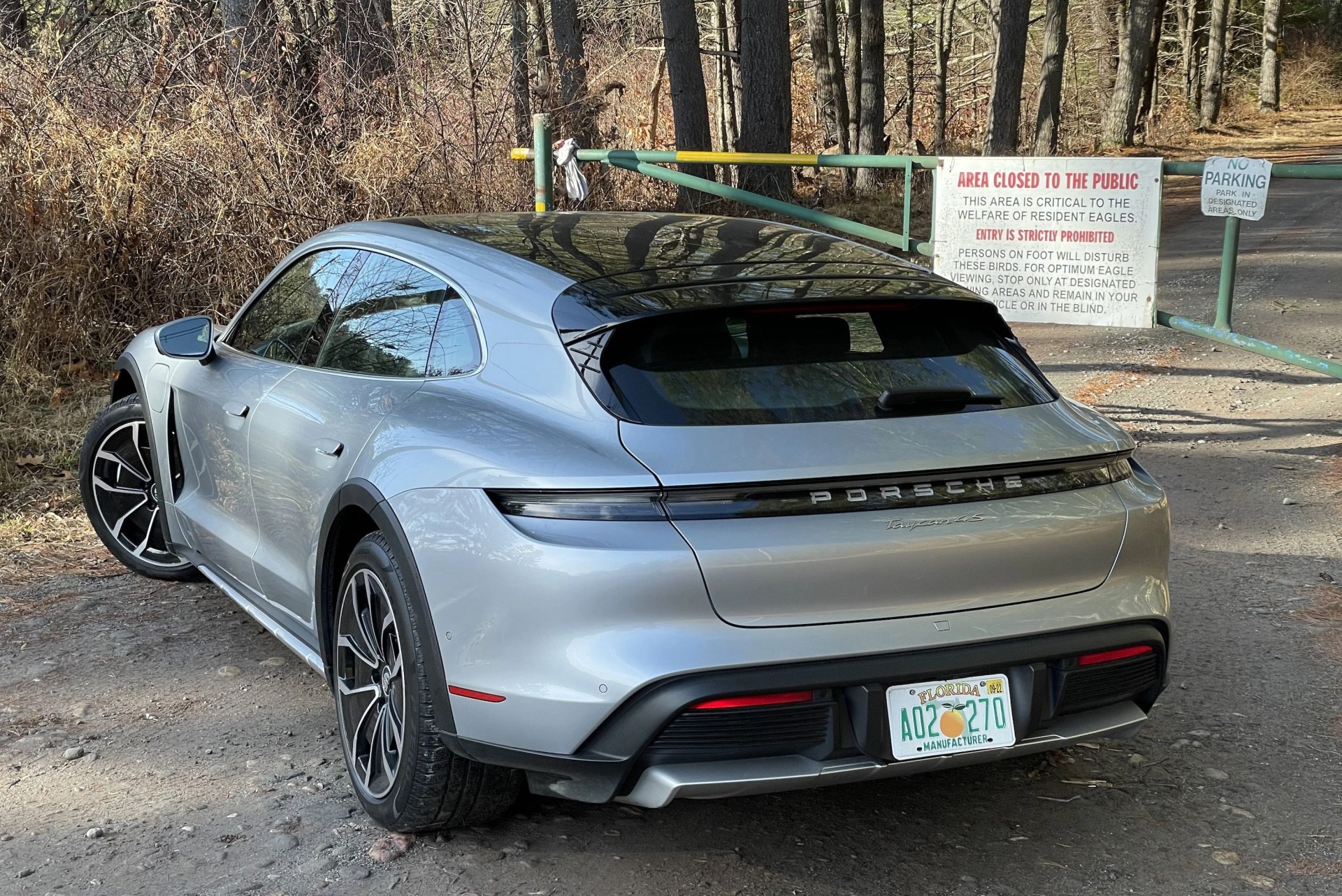In this writer’s opinion, the Porsche Taycan has a way of fooling people about what it is. Most people take one look at the electric Porsche and say, “Oh, it’s like a battery-powered Panamera, right?” A logical assumption, but a flawed one. The Taycan is closer to a battery-powered four-door 911 than a Panamera EV, I’d argue; it feels more like a sports car than a sedan, from seating position to reflexes.
That, however, makes categorizing the Cross Turismo version a bit difficult. After all, it’s not like Porsche ever made a shooting brake 911 — indeed, that seems about as counterintuitive a thought as exists in auto-dom. Indeed, trying to develop any sort of analogy or direct comparison with any other vehicle on sale today is hard; after all, nobody else makes an all-electric sports wagon that offers the chance to option it with body cladding and a roof rack.
Still, as I found after a few days of driving it around, just because nobody else is doing it doesn’t mean there’s a problem with the product category. Indeed, the Taycan 4S Cross Turismo offers a delightful blend of performance, style and practicality that makes it an exceptional daily driver — especially if the charging infrastructure where you live makes EV life easy.
The Taycan 4S Cross Turismo remains very much a Porsche
 Will Sabel Courtney
Will Sabel CourtneyWhen the Cross Turismo dropped, I described it roughly as the Subaru Outback version of the Taycan. After driving it, however, I can genuinely say I was off the mark there. While it does receive some body cladding around the wheel wells and a slight lift, the lift is inconsequential compared with one of Subaru’s soft-roaders; the roofline is 1.2 inches taller than the sedan, and ground clearance upped just eight-tenths of an inch to 5.7 inches — or 6.1 if you opt for the off-road design package and dial the suspension up to max height. To put it another way: its roofline is still lower than a Toyota Camry’s.
Suffice it to say, that means it doesn’t handle much like a Subaru, either. My test car did without any of the many performance add-ons Porsche has on offer — no Porsche Torque Vectoring Plus, no Porsche Dynamic Chassis Control Sport, no rear-wheel steering, no Sport Chrono Package with its accompanying Sport Plus drive mode — so it wasn’t as razor-sharp as the Taycan can be. That said, a Porsche is a Porsche; the body may roll a dash more than expected in turns, but it’s still capable of taking them at twice the recommended limit. Plus, the base setup also delivered a wonderfully pliant, comfortable ride, even on the 20-inch Taycan Turbo wheels. (Admittedly, the 19-inch base rims might have tires with more sidewall, but they don’t look nearly as good.)
As with the 4S sedan, acceleration is delightfully brisk at any speed; find a gap and smash the right pedal, and the Taycan jumps to warp speed. And when the time comes to slow down, doing so gently will recoup maximum power — but the optional surface-coated brakes of my test car also do a remarkable job hauling this hefty car’s mass down to zero velocity lickety-split when need be.



